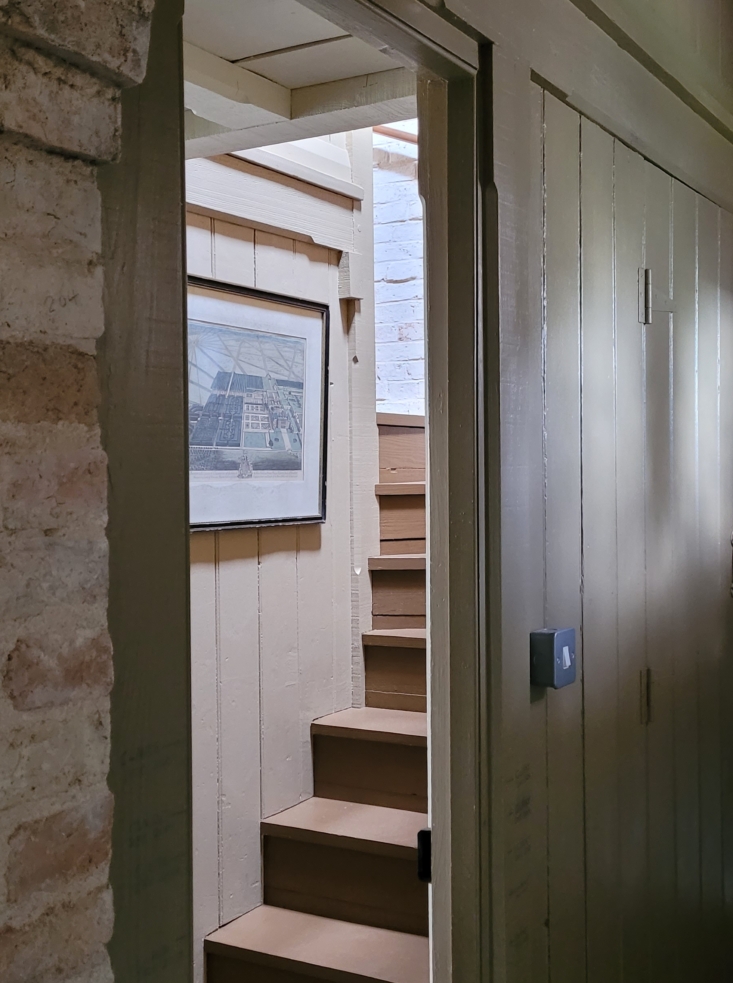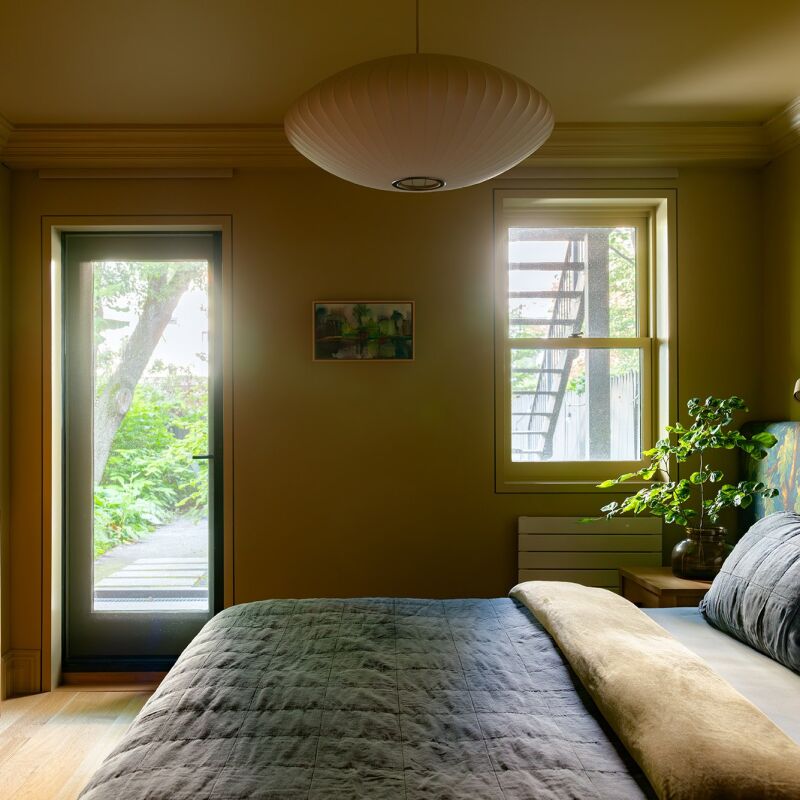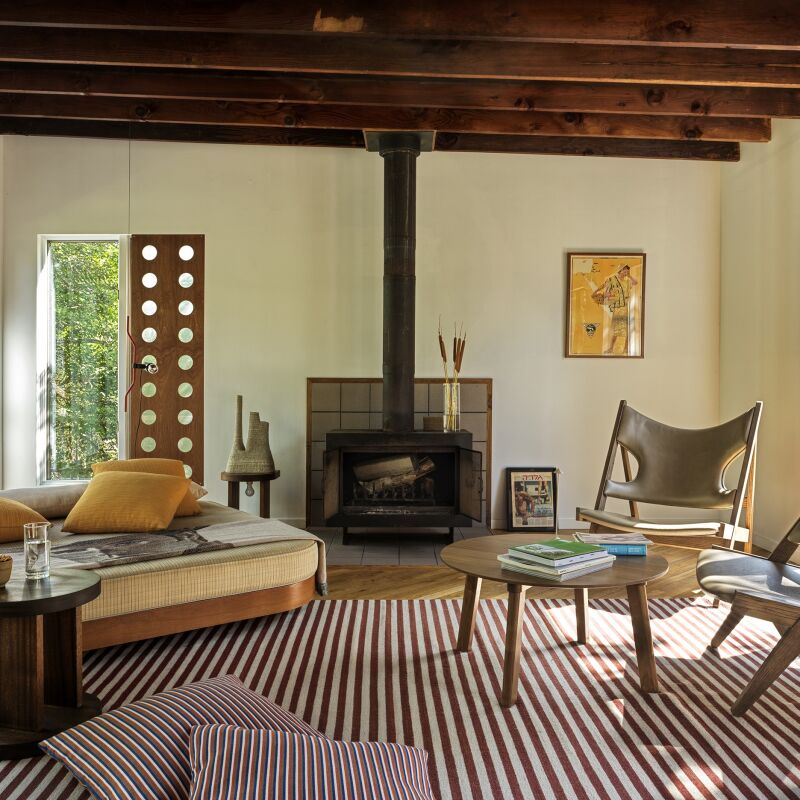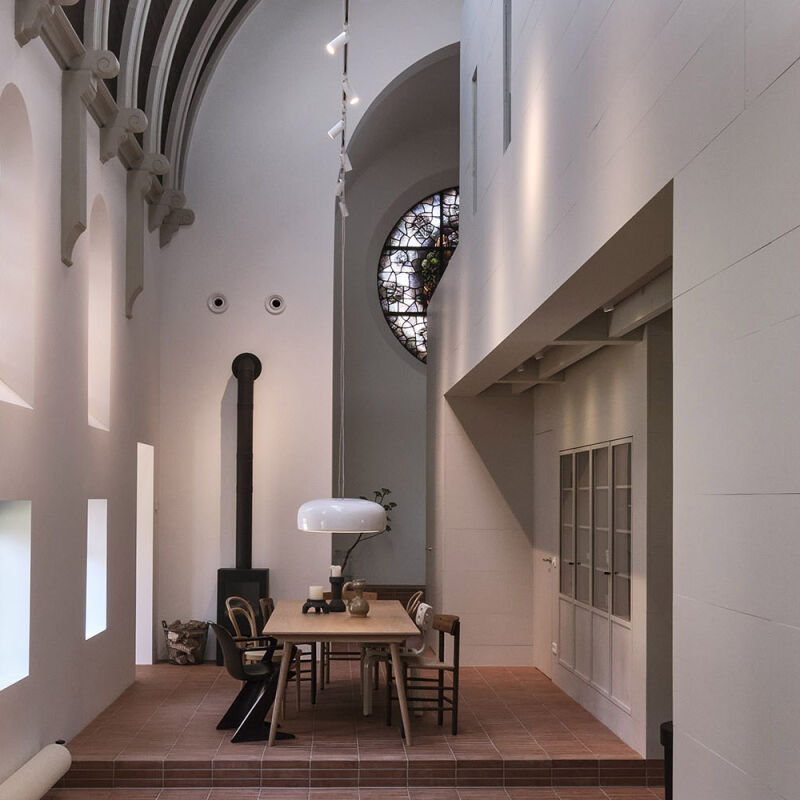From time to time we run across a designer and quickly spend the rest of the week deep-diving through their entire portfolio. Such was the case with UK-based Ridge & Furrow, the project of husband and wife Elle Kemp and Martin Gane. “It’s the amalgamation of our various skills, plus the realization after we finished building our own home and garden that we’d like to do this for other people full time,” says Elle.
Fittingly, our first feature on Elle’s and Martin’s work is their own home in the Cotswolds, an old barn the couple bought in 2012 when Elle was seven months pregnant with their first child (their son Claude is now 9; Gilbert is 6). “It wasn’t love at first sight,” Elle says of the house. “Ours is not one of those barn conversions that you might typically imagine—no great theatrical open spaces of soaring scale, no grand timber frames sweeping to the ceiling. Its delights took longer to appreciate.”
Which is somewhat of an understatement. “The only things here when we bought the place were the brick and stone walls and the outer roof structure. There was no floor, only mud, and no upper story. But unusually for an agricultural building, it was designed by an architect, Benjamin Bucknell, in the Victorian era,” Elle says. “We discovered that the original plans are in the Gloucester archives.”
Martin did all of the building, adding stairs and free-standing timber frames, designed by the couple, to create room upstairs, and the two added reclaimed materials to divide up the downstairs and upgraded doors and windows to make the house livable and warm. “All of the original material of the building remains, but in some spaces it’s covered up in order to add insulation or to meet building regulations,” says Elle. “All the layers we’ve added are breathable, using natural materials such as cork, lime, and sheep’s wool and avoiding impermeable materials like plastic, plaster board, and standard insulation.”
“Living in a Victorian pigsty,” Elle self-deprecatingly describes on her Instagram, but the finished effect, though rustic, is layered, laid-back, and sophisticated. Join us for a look at their family’s snug, reclaimed house in pleasantly “muddy” hues.
Photography courtesy of Ridge & Furrow.






As for the house’s palette: “We both love muddy tones,” Elle says. “We also looked through our reclaimed timbers to pick out any remains of old paint colors we could find for inspiration. When I was stuck, Martin said one day he’d like the place to feel like his battered old tweed jacket, so I turned to that for color inspiration, too. In a time when the world was still painting everything grey, we went for browns, tans, khaki, and black. We particularly liked Farrow and Ball’s Drab; both the color and its name spoke of what we wanted to achieve: unpretentious, low-key, austere, muddy, and relaxed.”








As of now, the family is looking for their next historic structure to repair—and putting the Cotswolds barn on the market. “Neither of us believe in ‘forever homes’ and are more inclined to throw ourselves out of our comfort zones and go where the wind takes us for the thrill of another project,” says Elle. “We both have a shared love for historic houses and, in particular, traditional domestic interior detailing. We don’t have anything lined up yet, but we’re actively on the hunt.”
For more thoughtfully rehabbed projects in the UK, see:
- In the Stillness: A 1640s Georgian in an Affecting Palette by Cassandra Ellis
- Getaway Cars: Converted Rail Carriages as Vacation Cabins in Norfolk, England
- Kitchen of the Week: Calamine Pinks in a Converted Barn Kitchen by Plain English
N.B.: This post is an update; the original story ran on January 28, 2022, and has been updated with new information and links.






Have a Question or Comment About This Post?
Join the conversation (4)